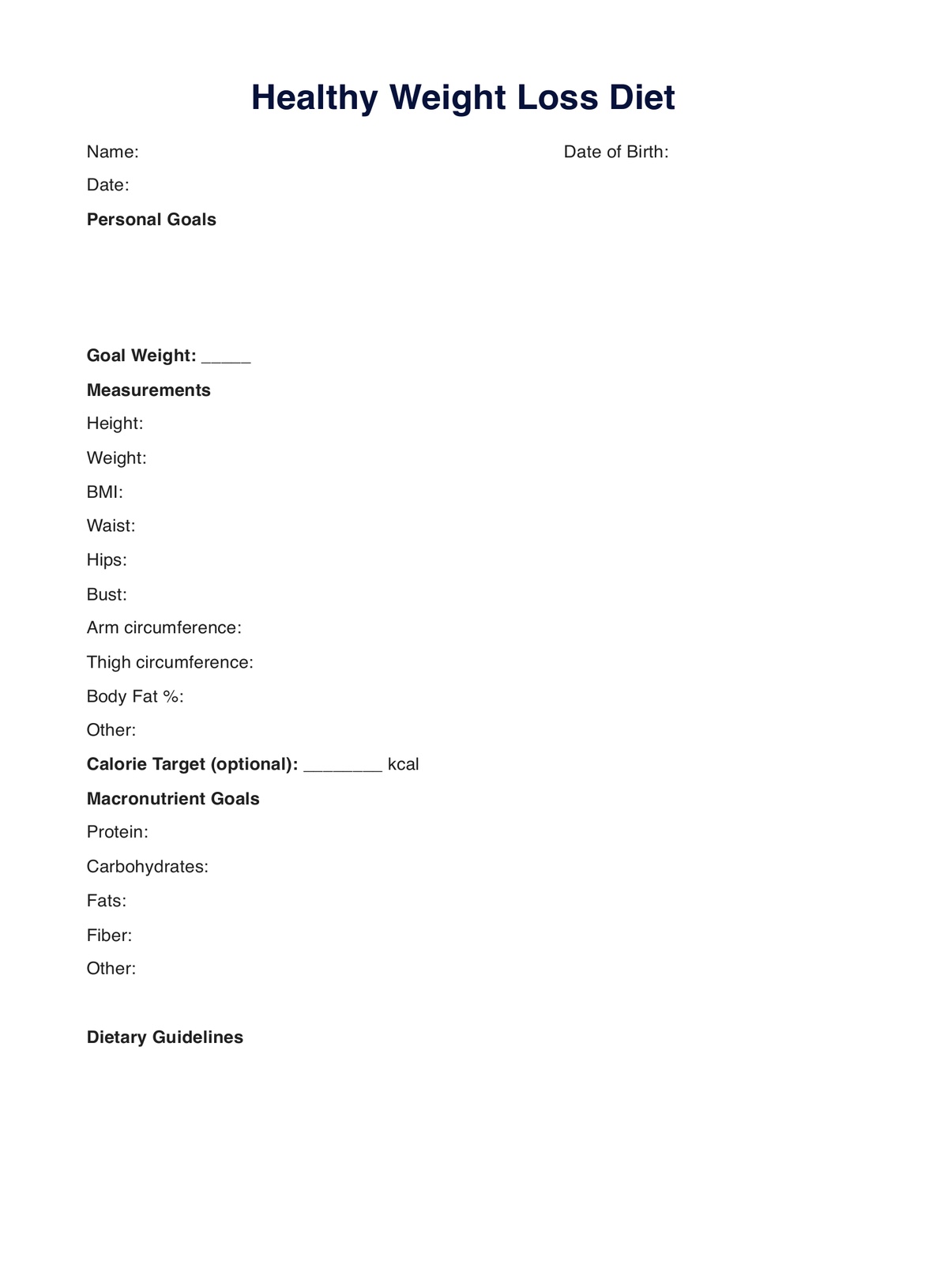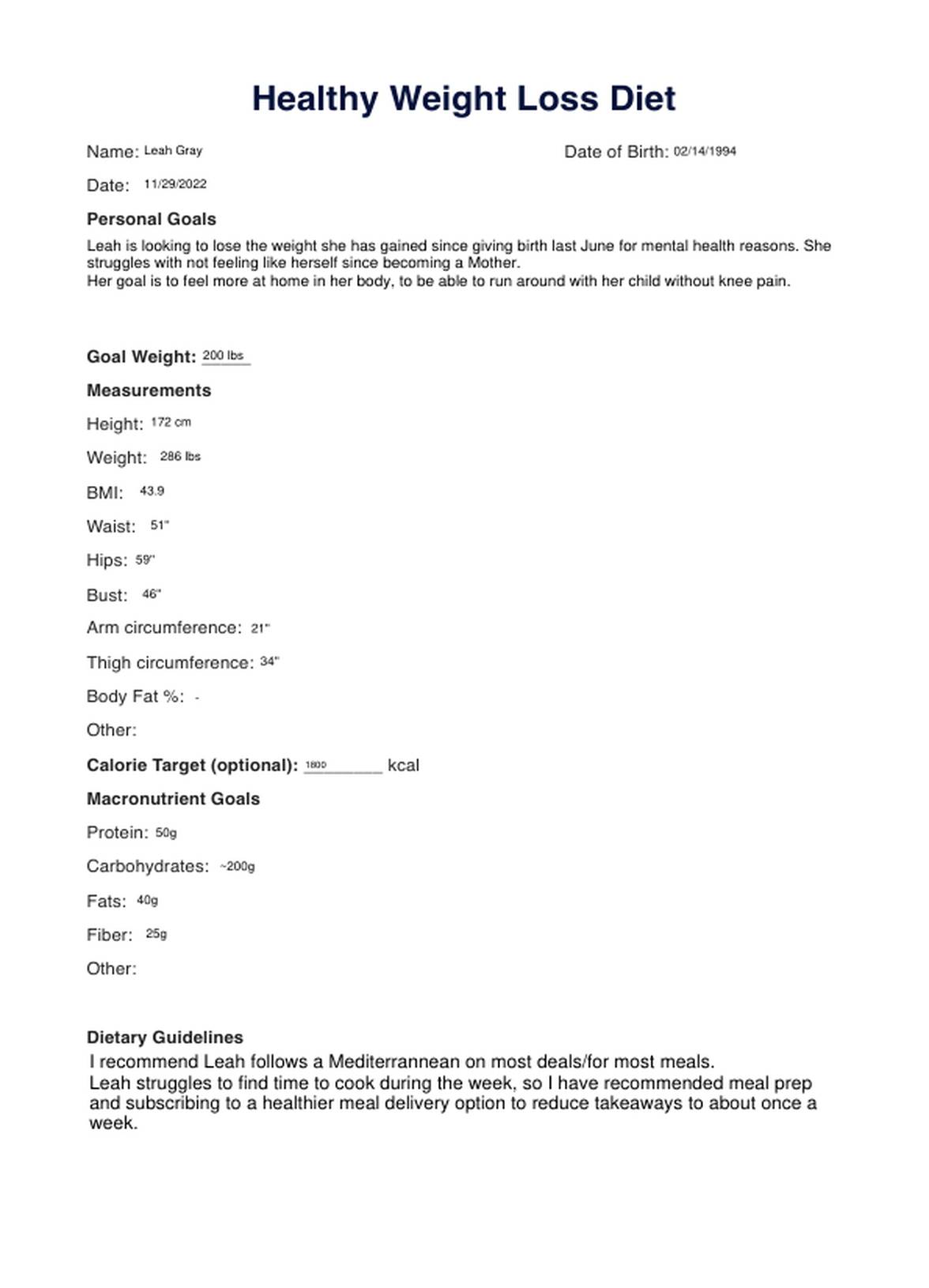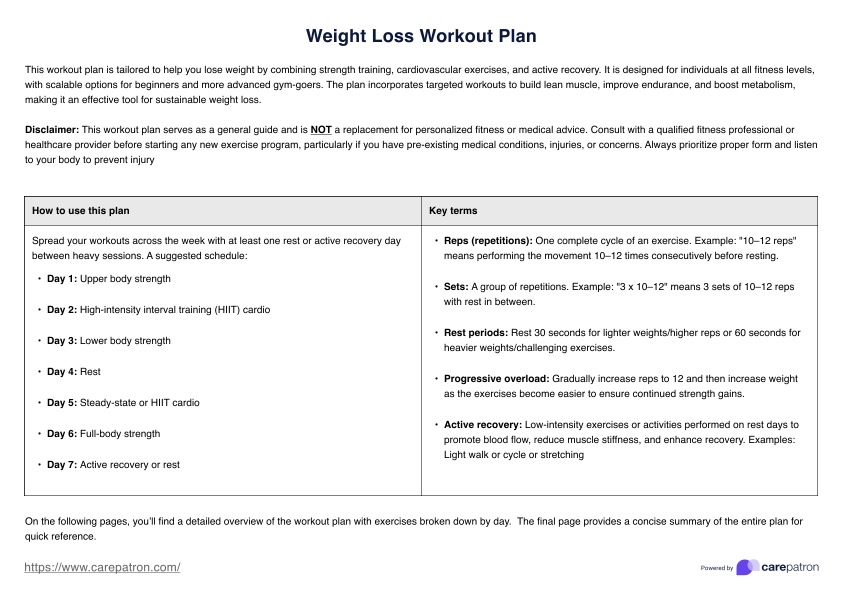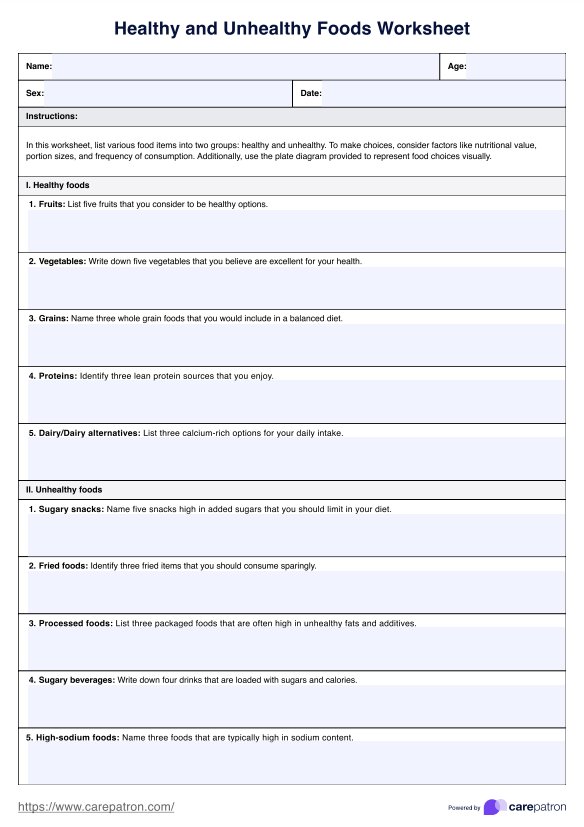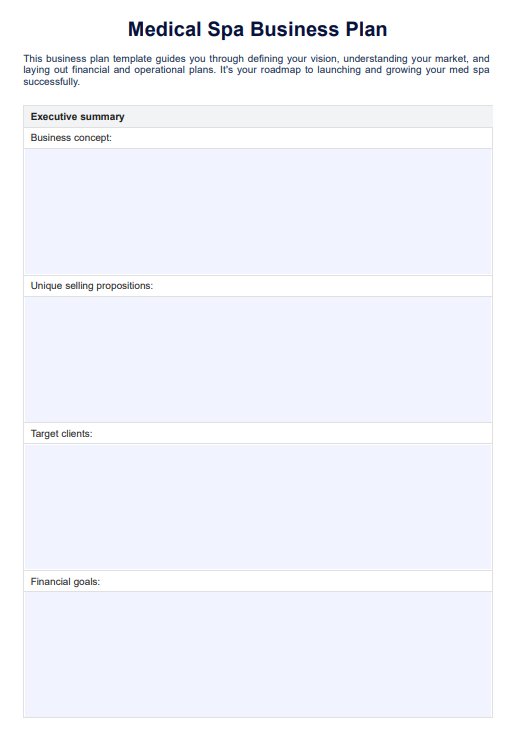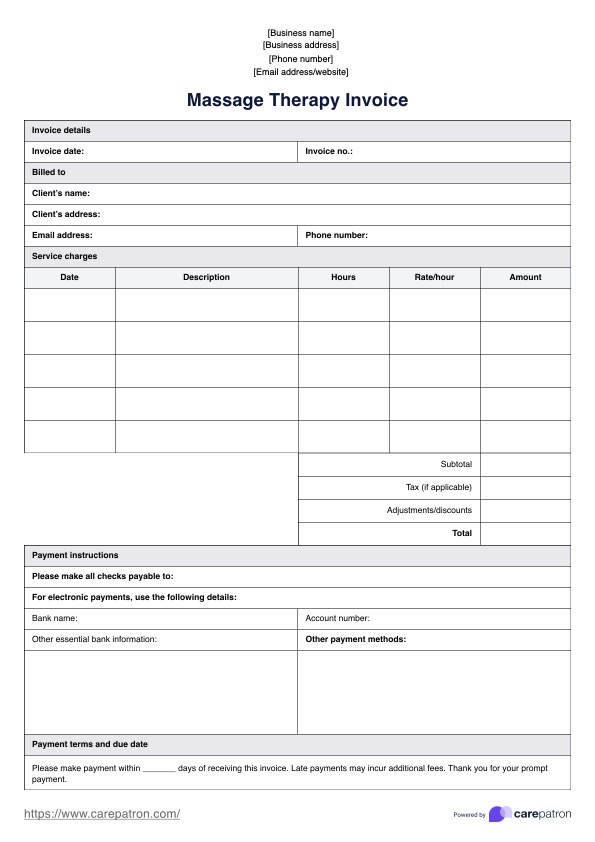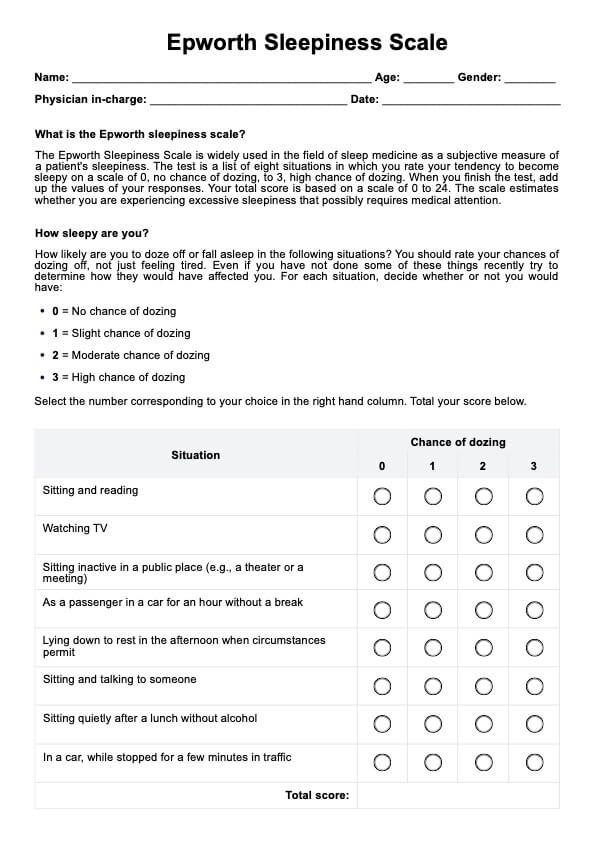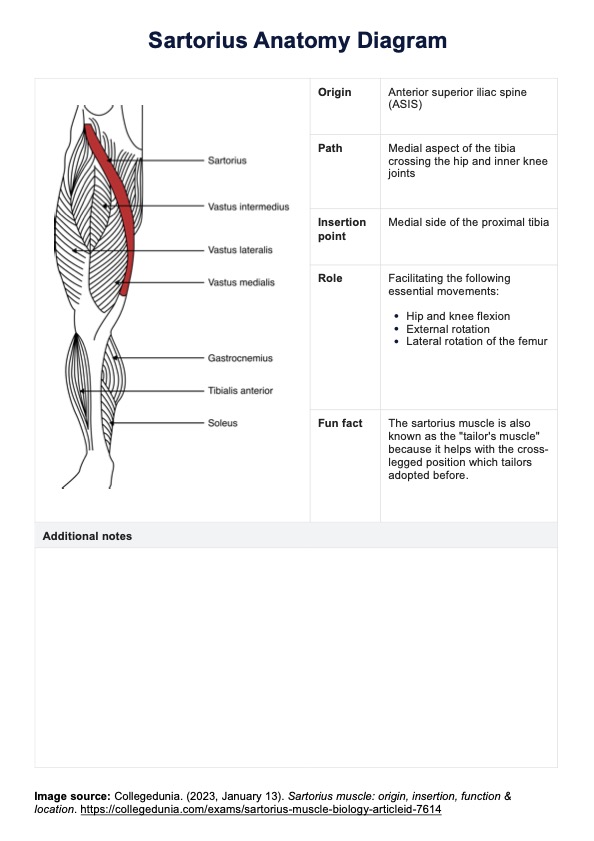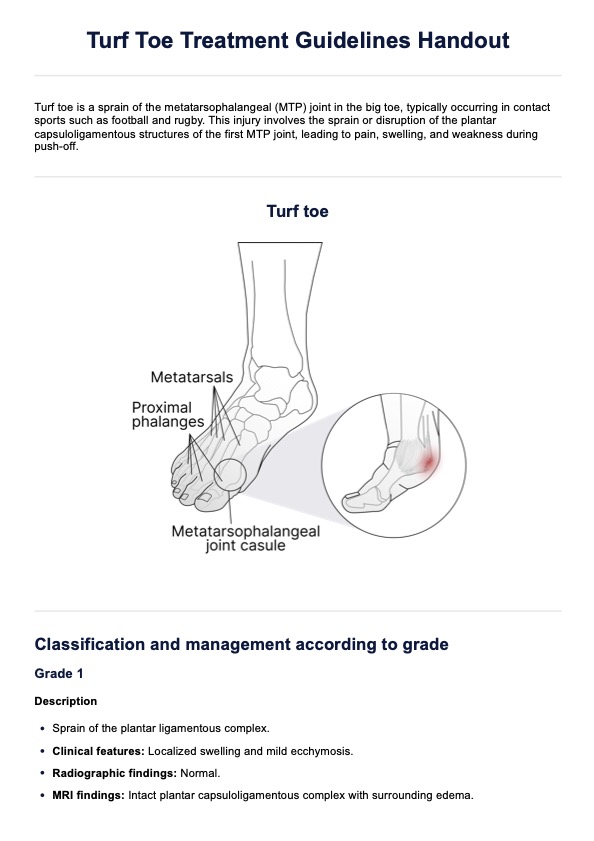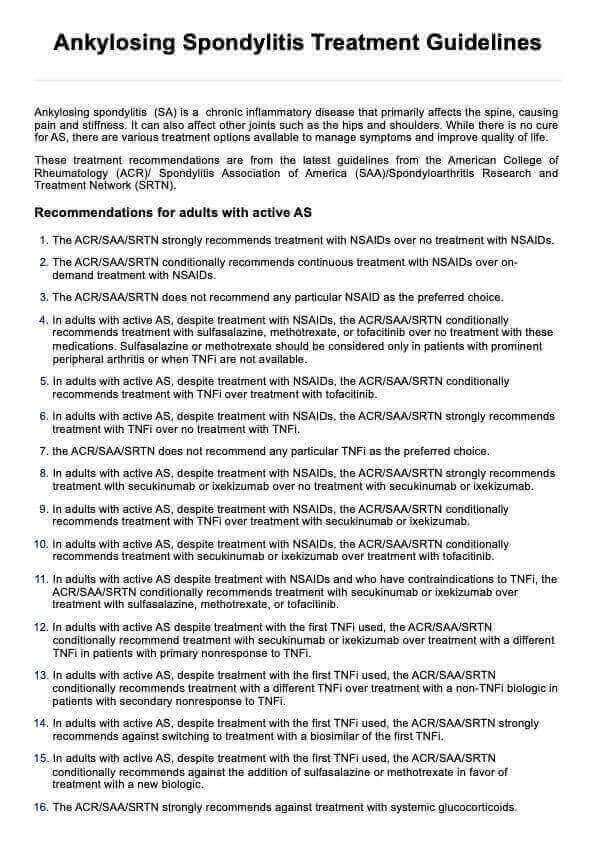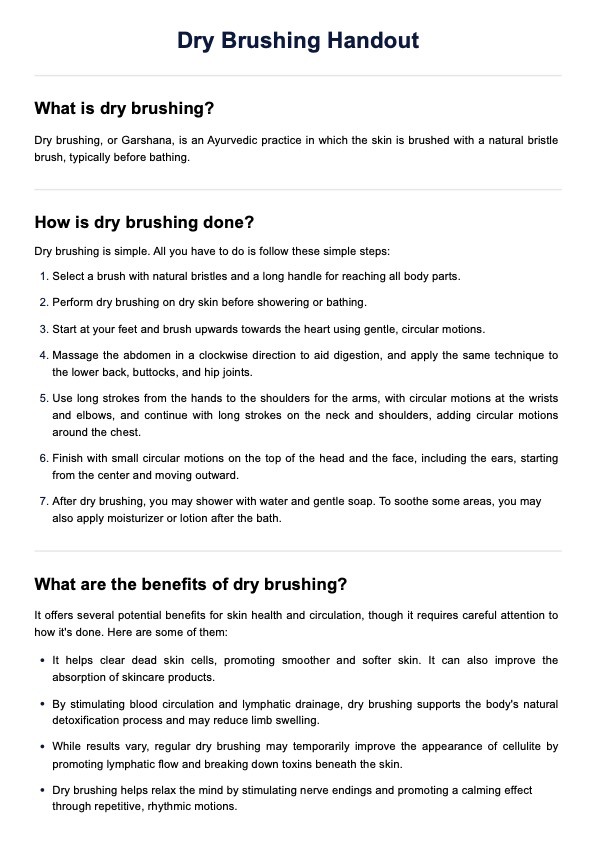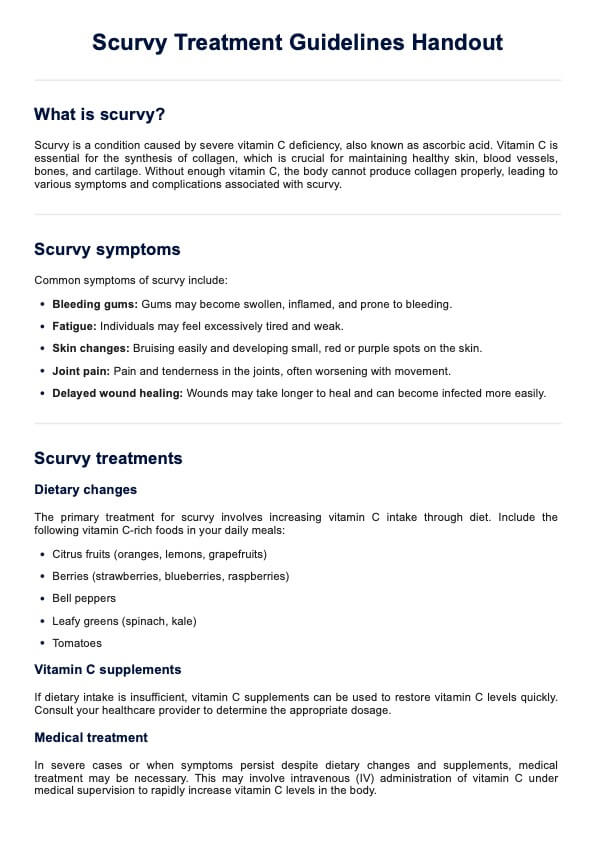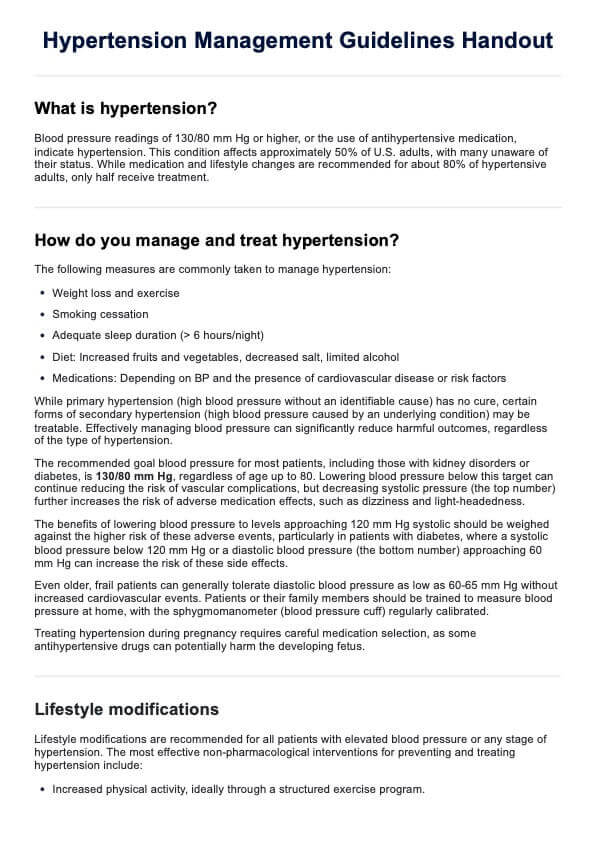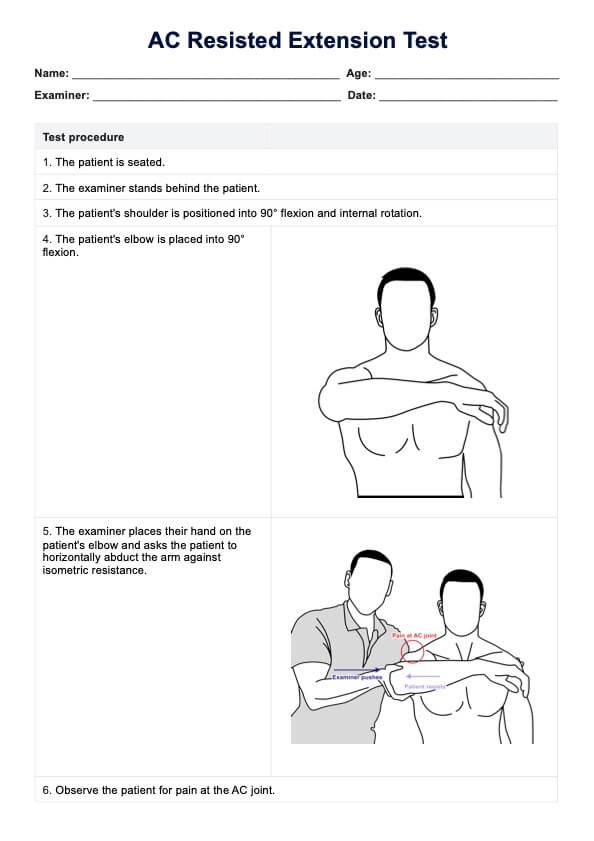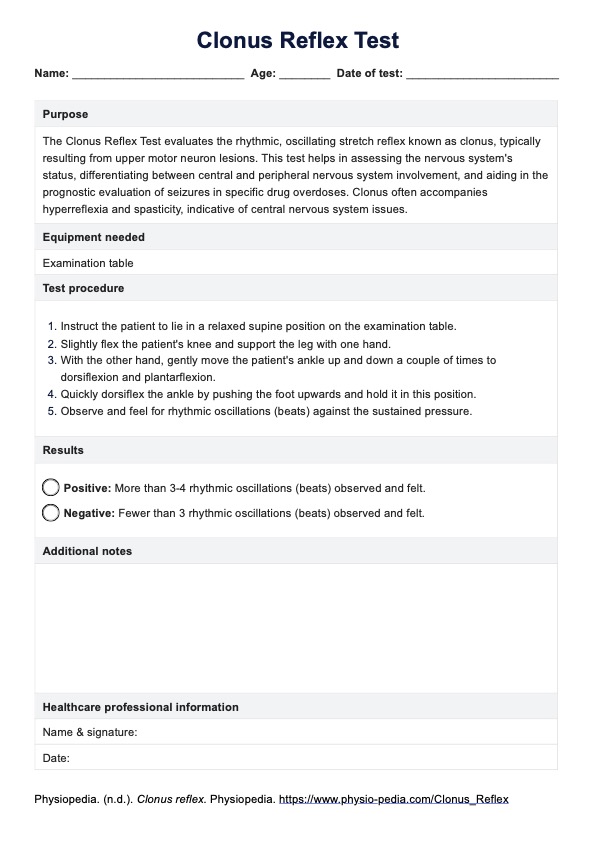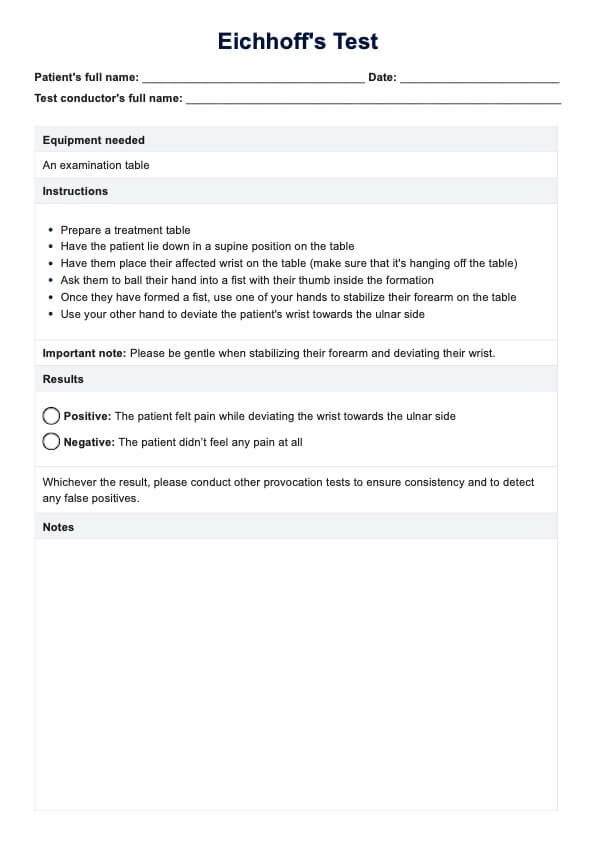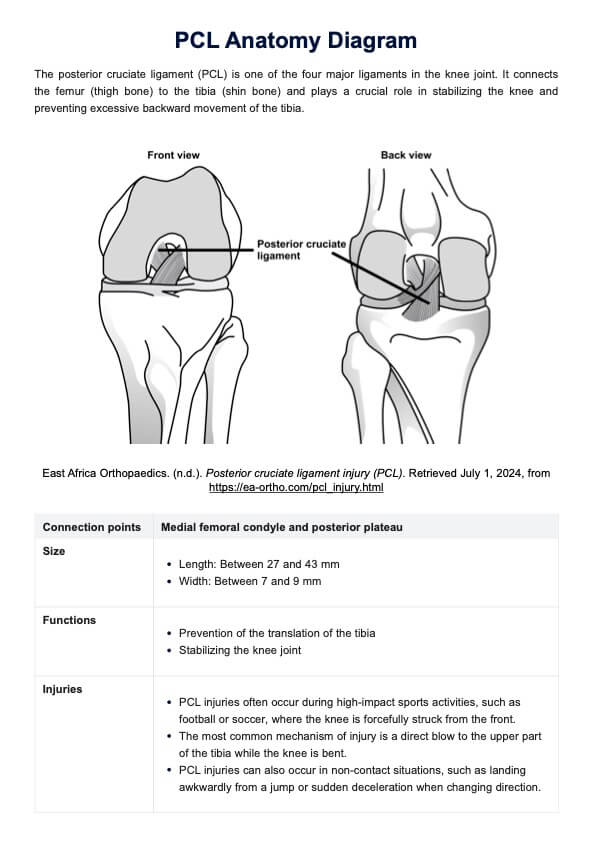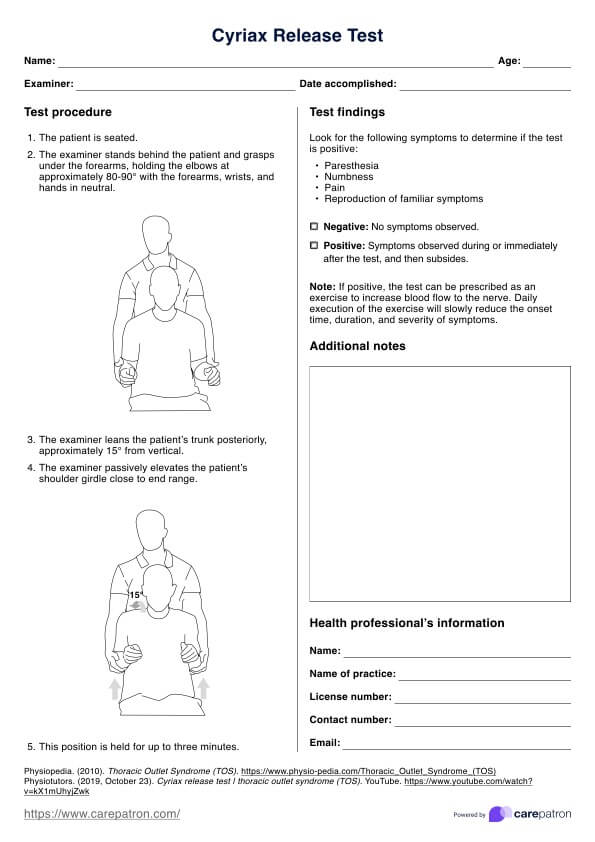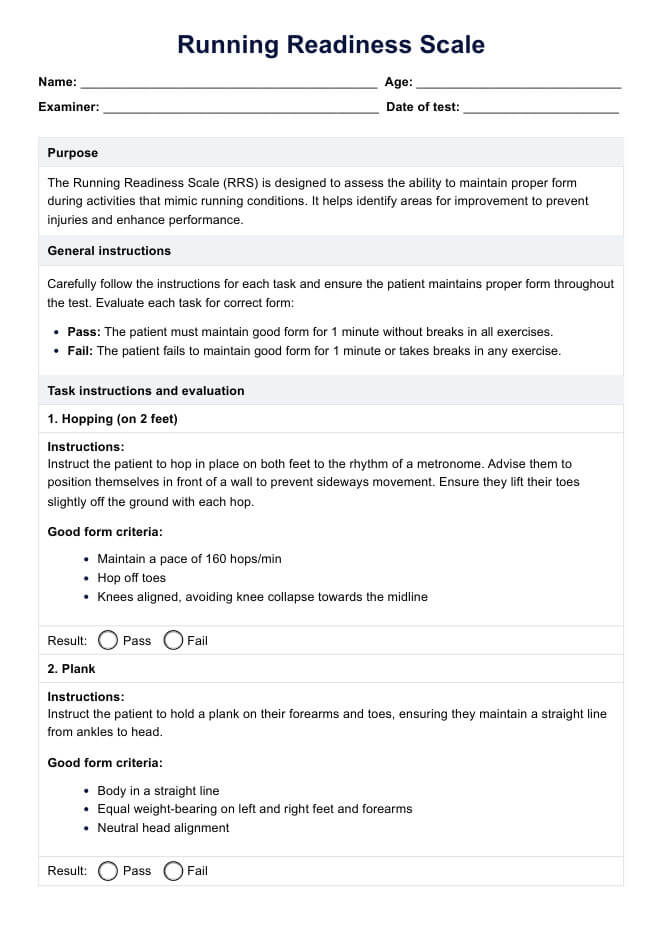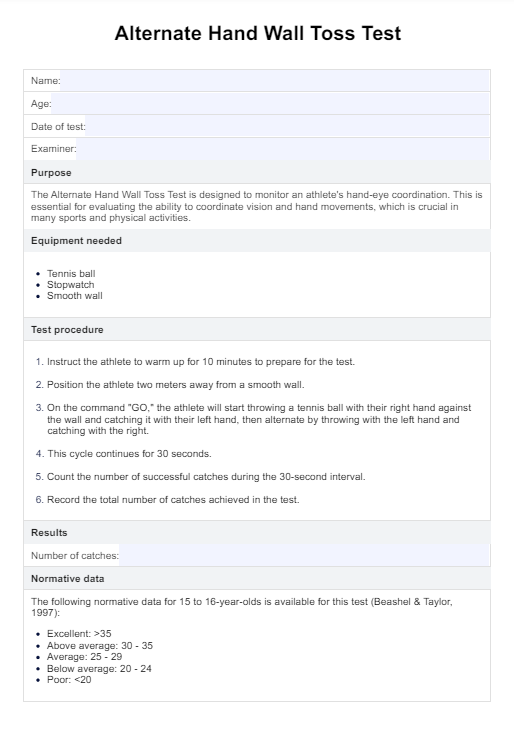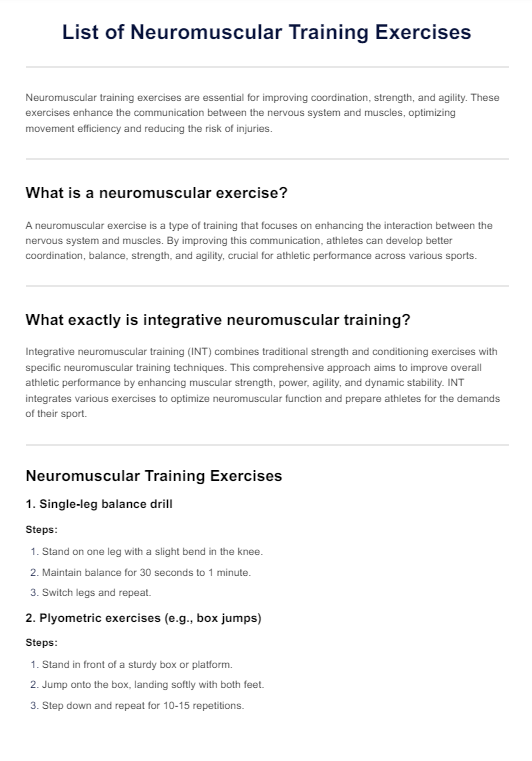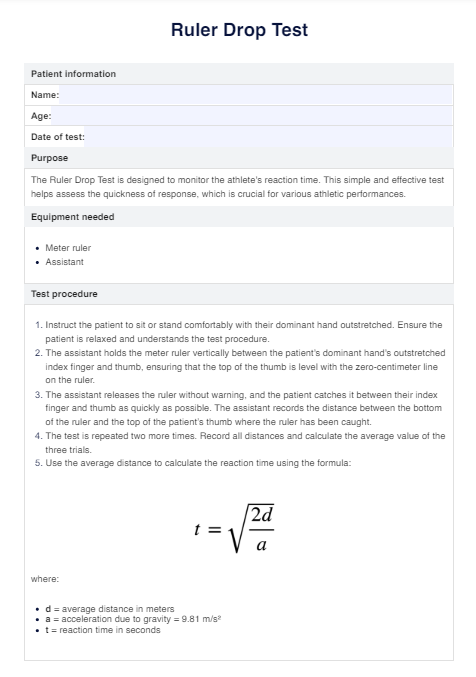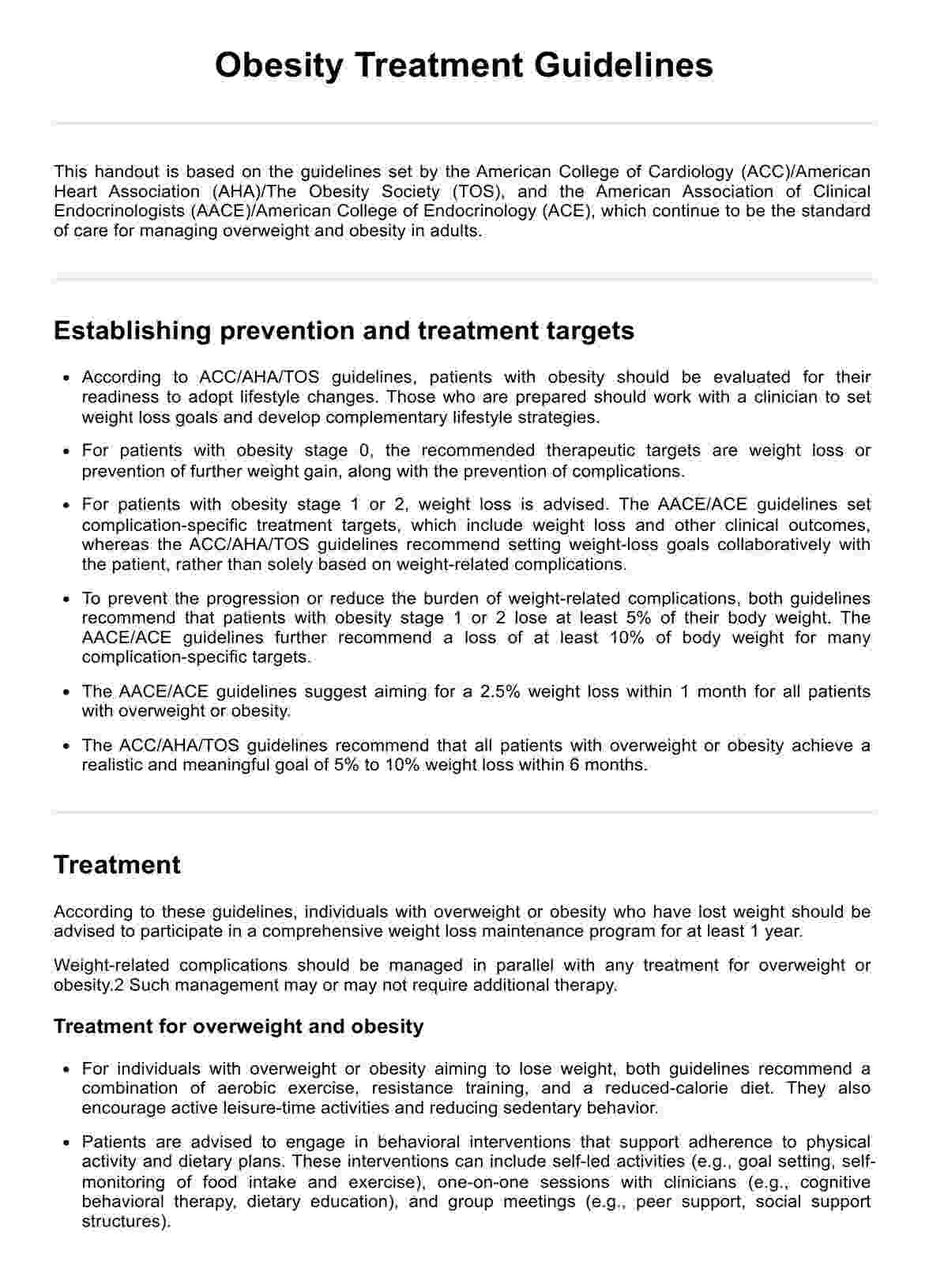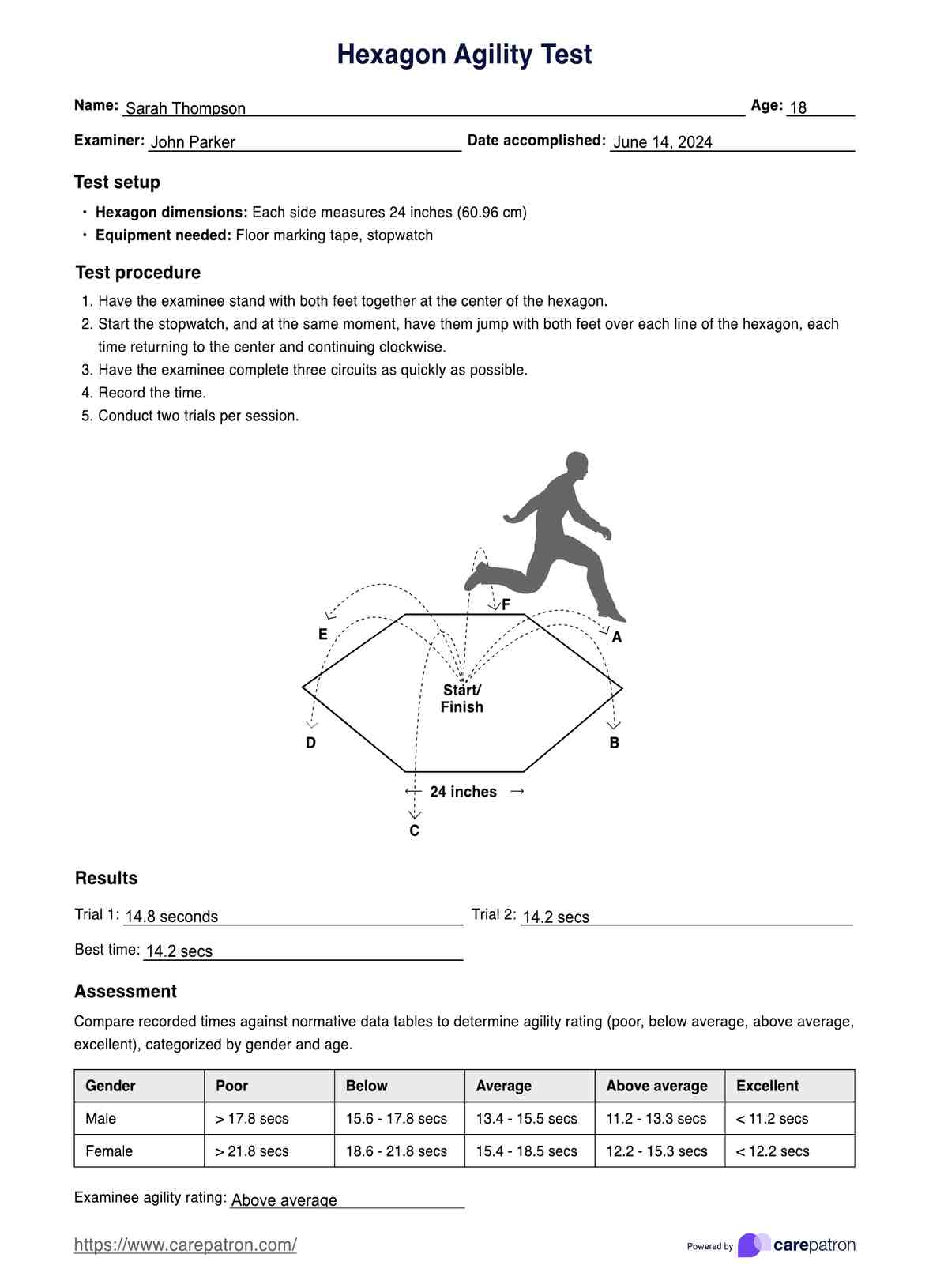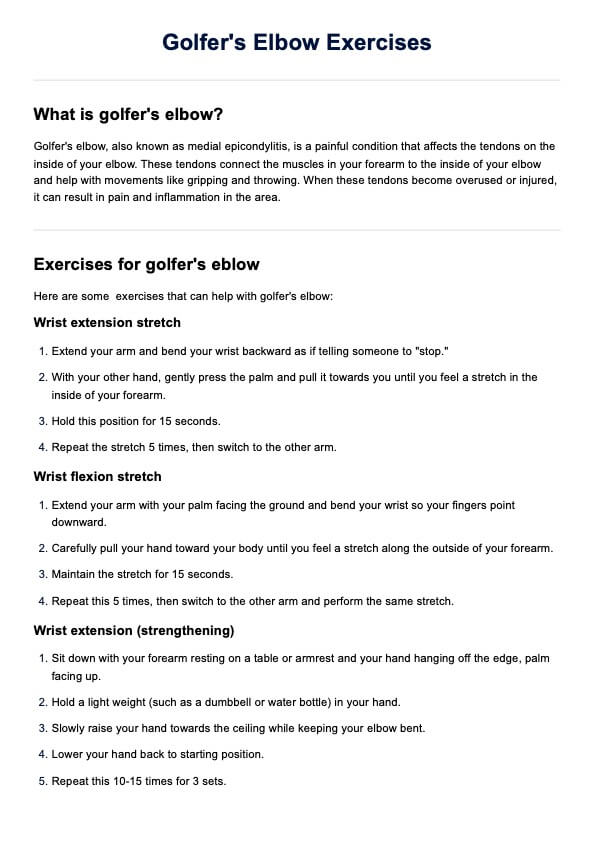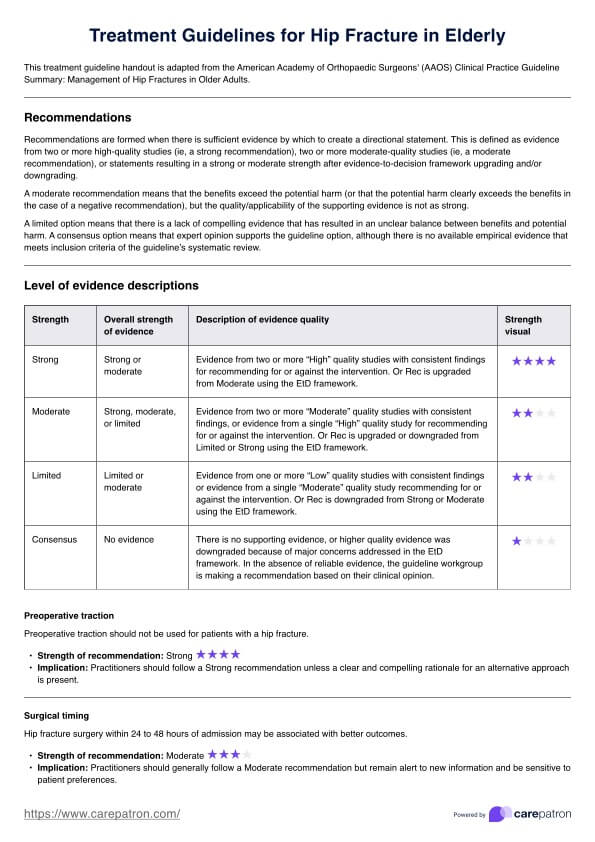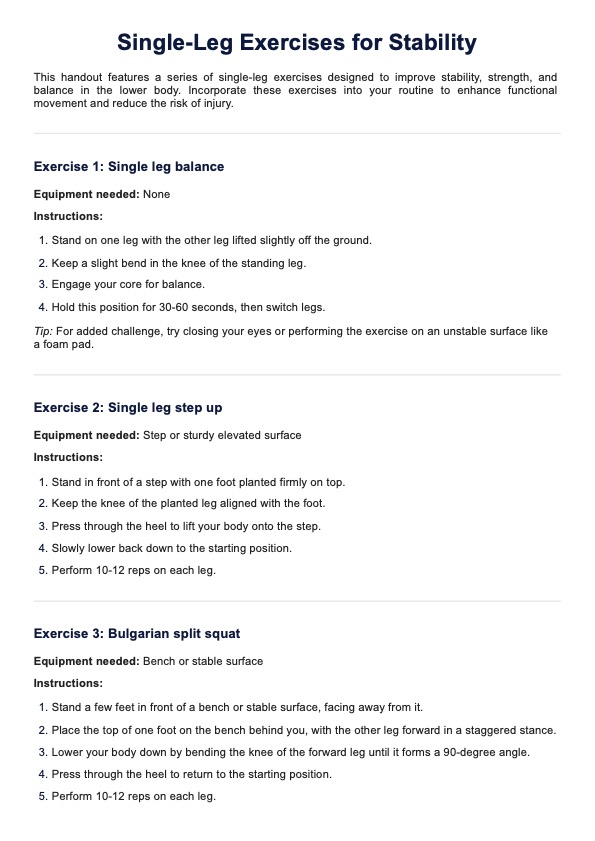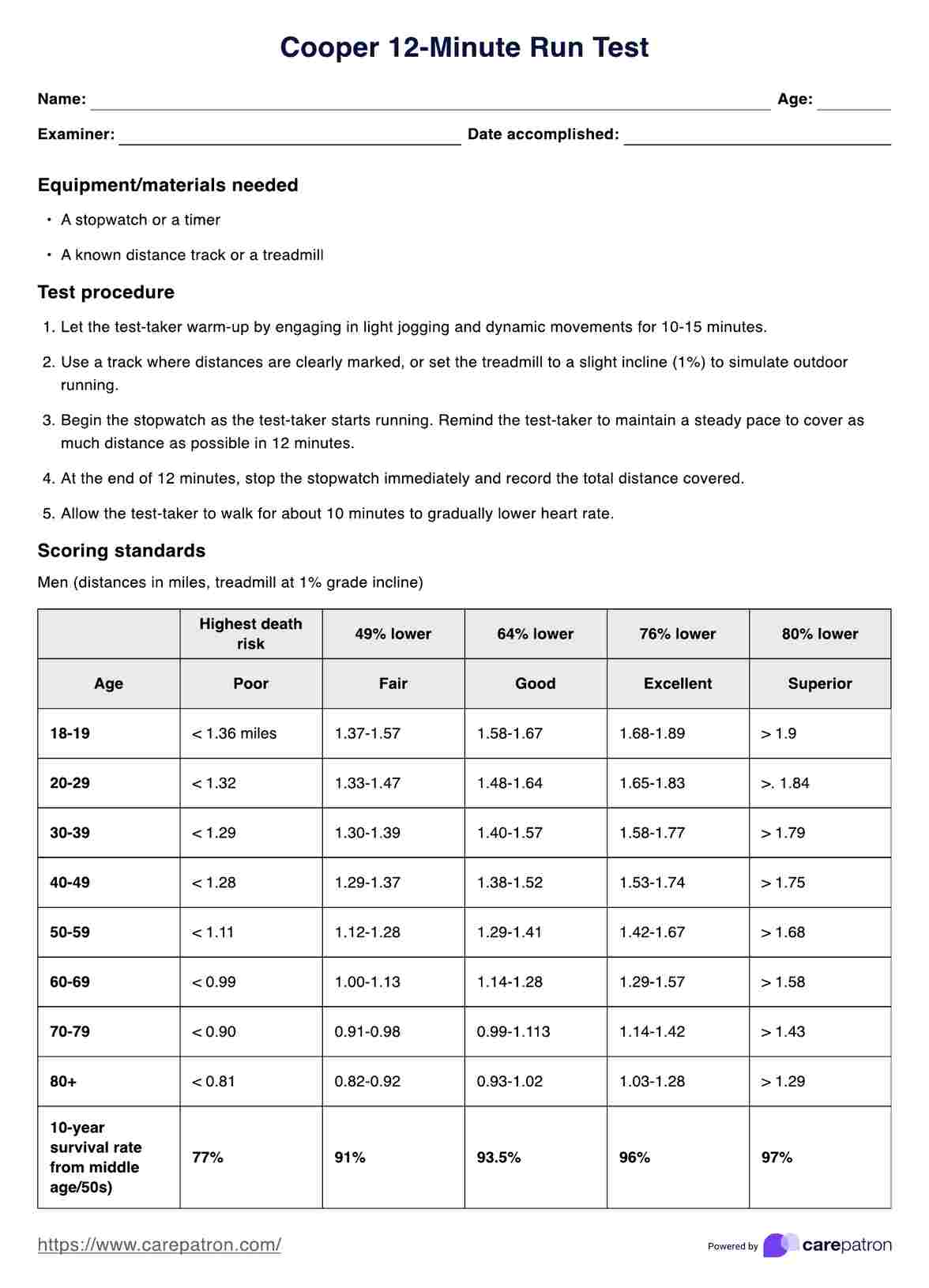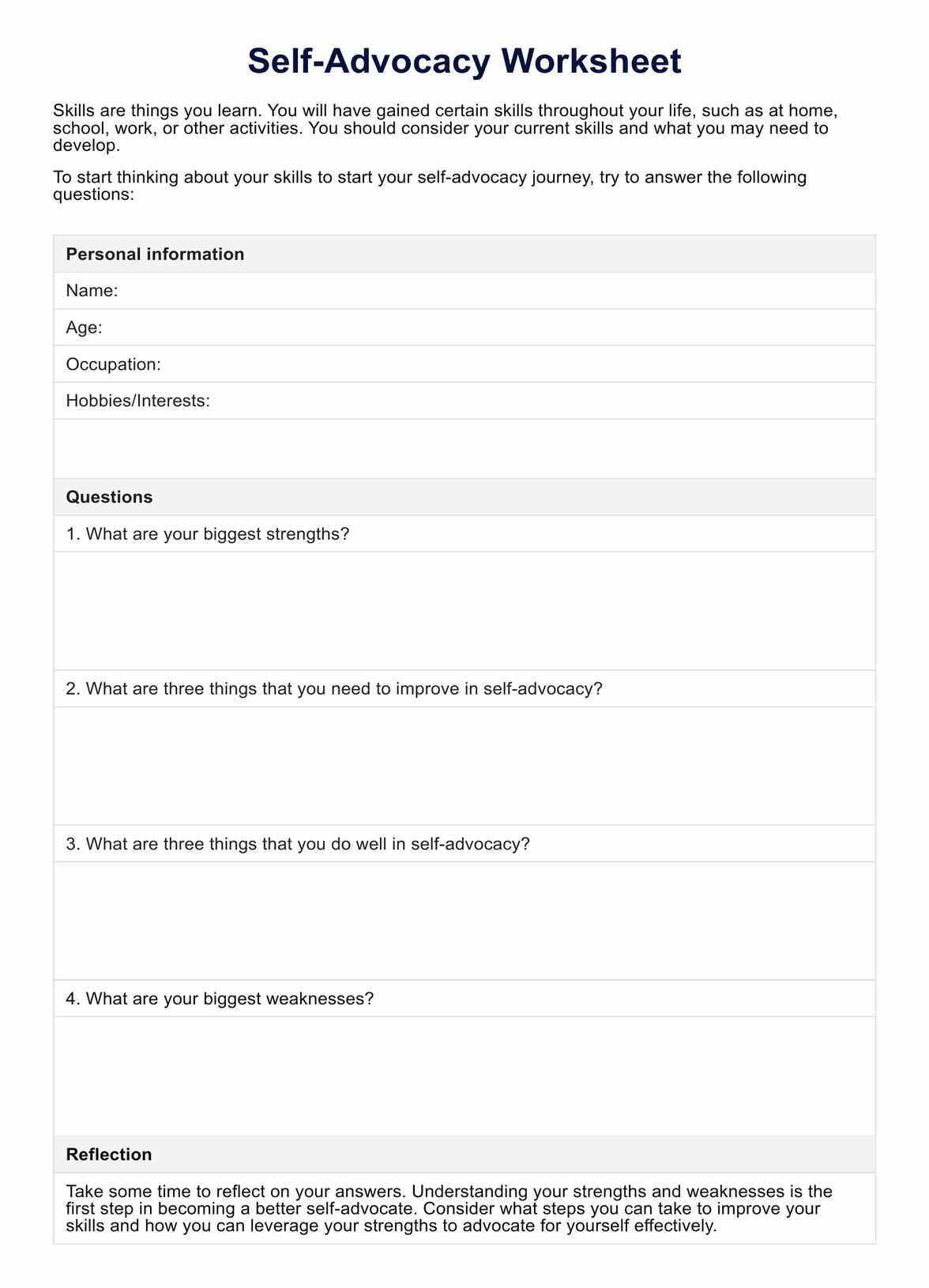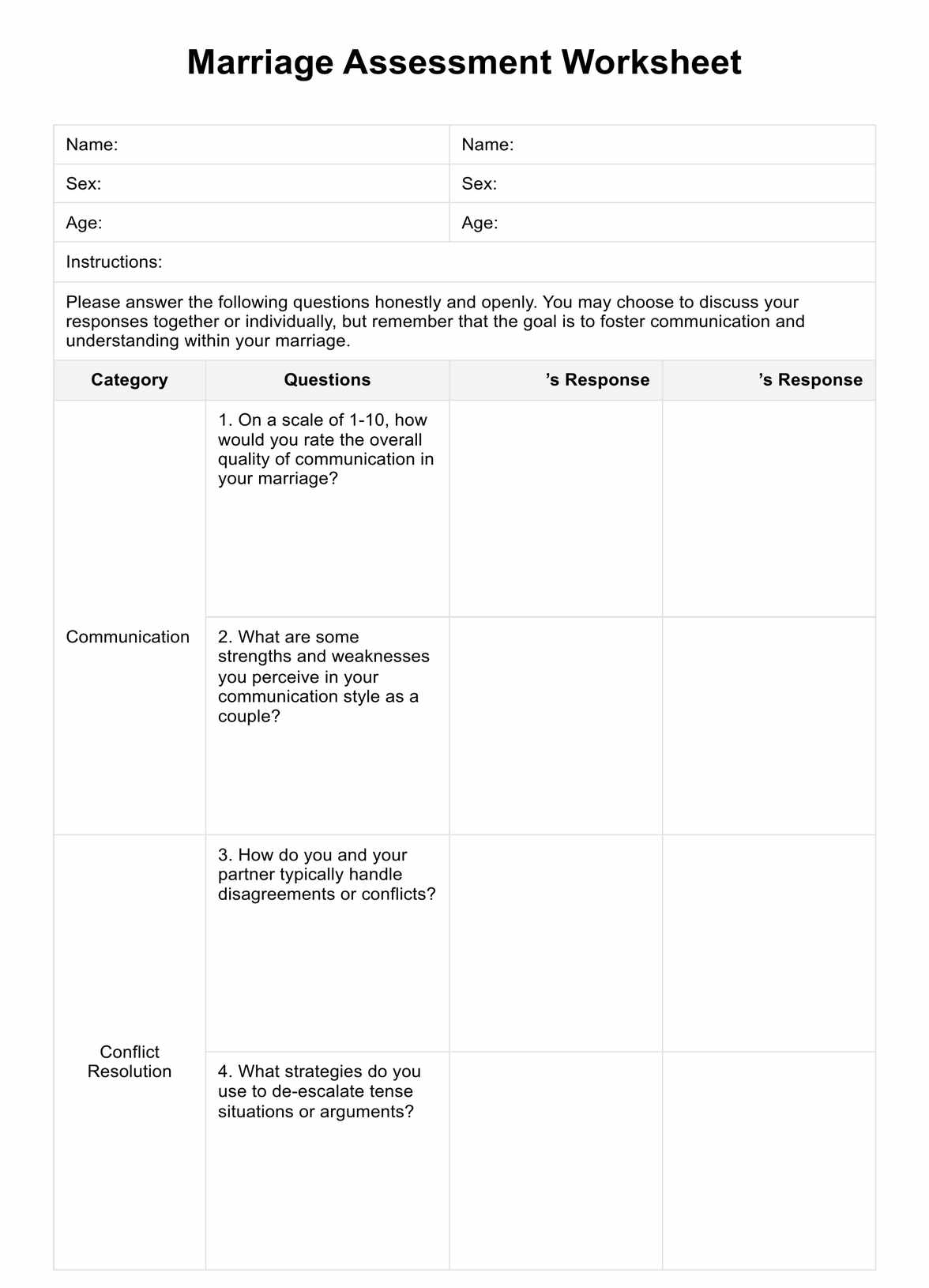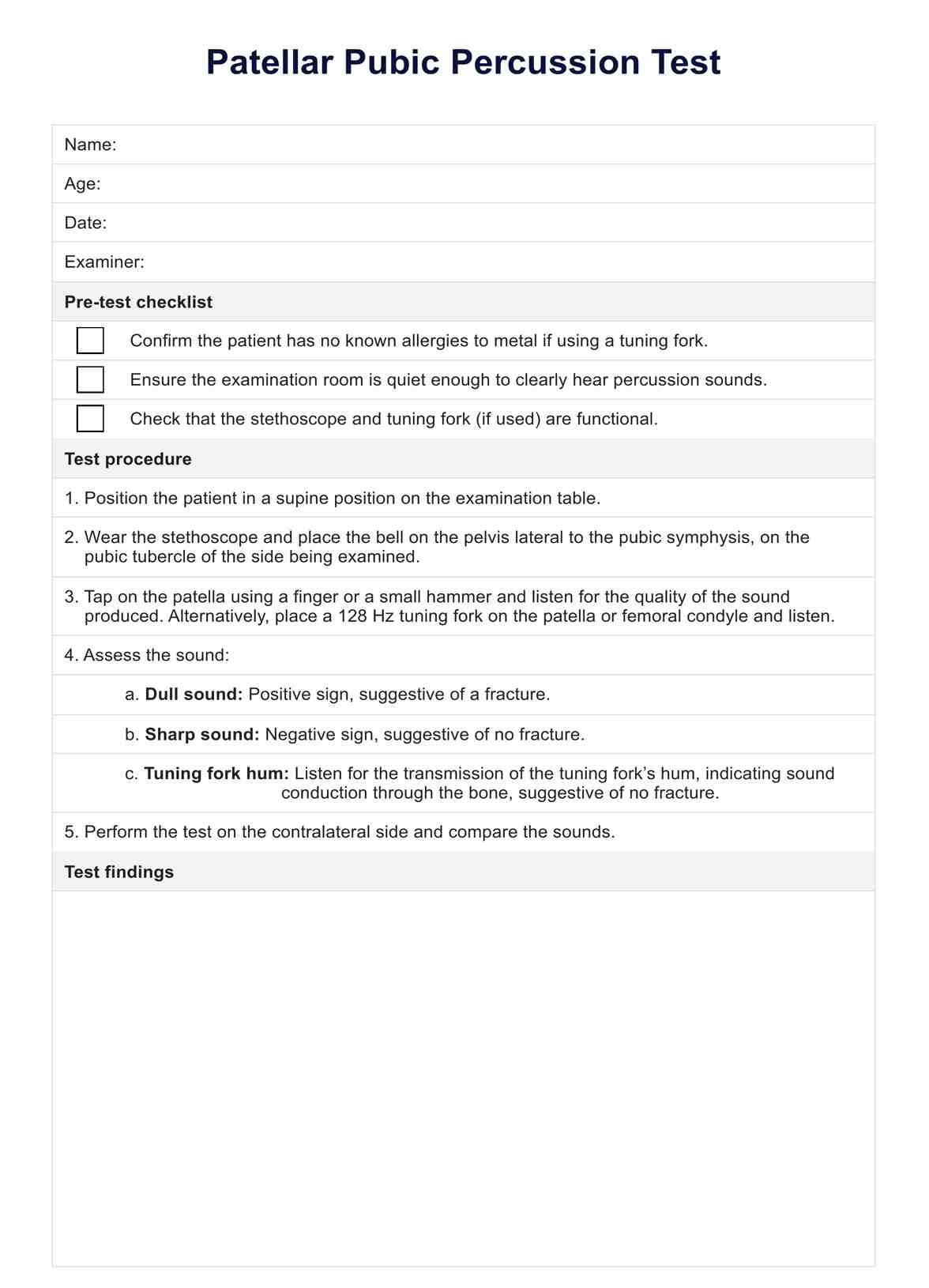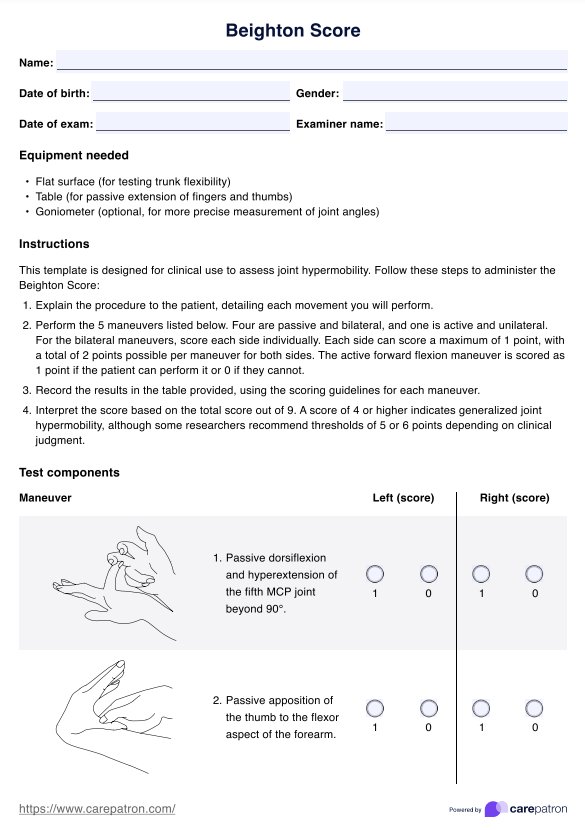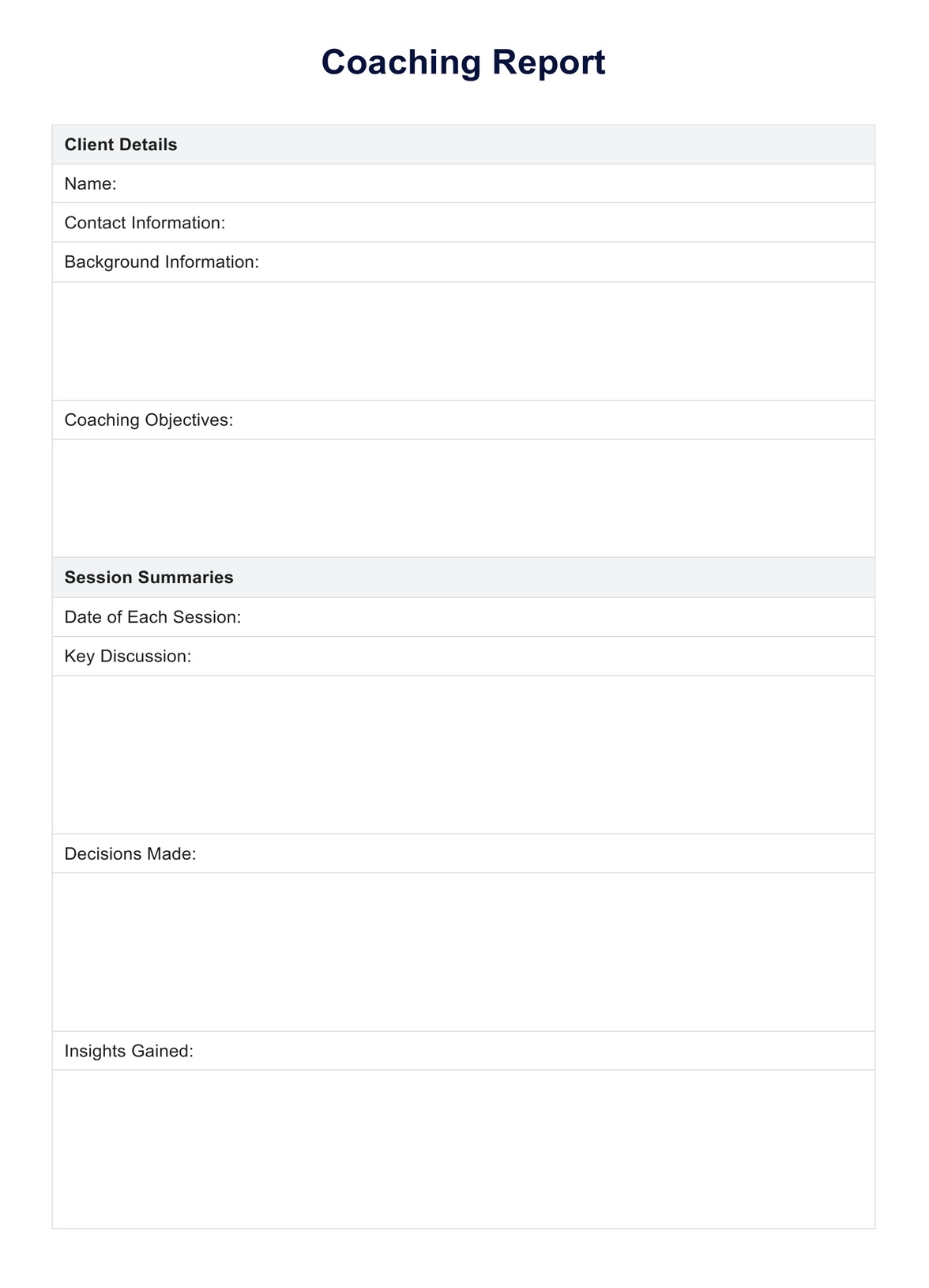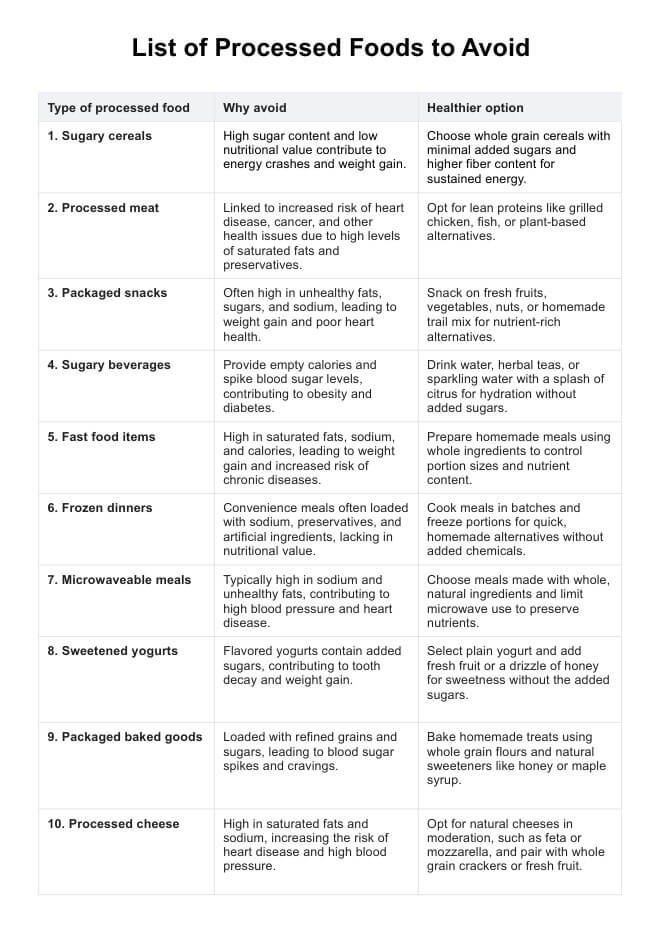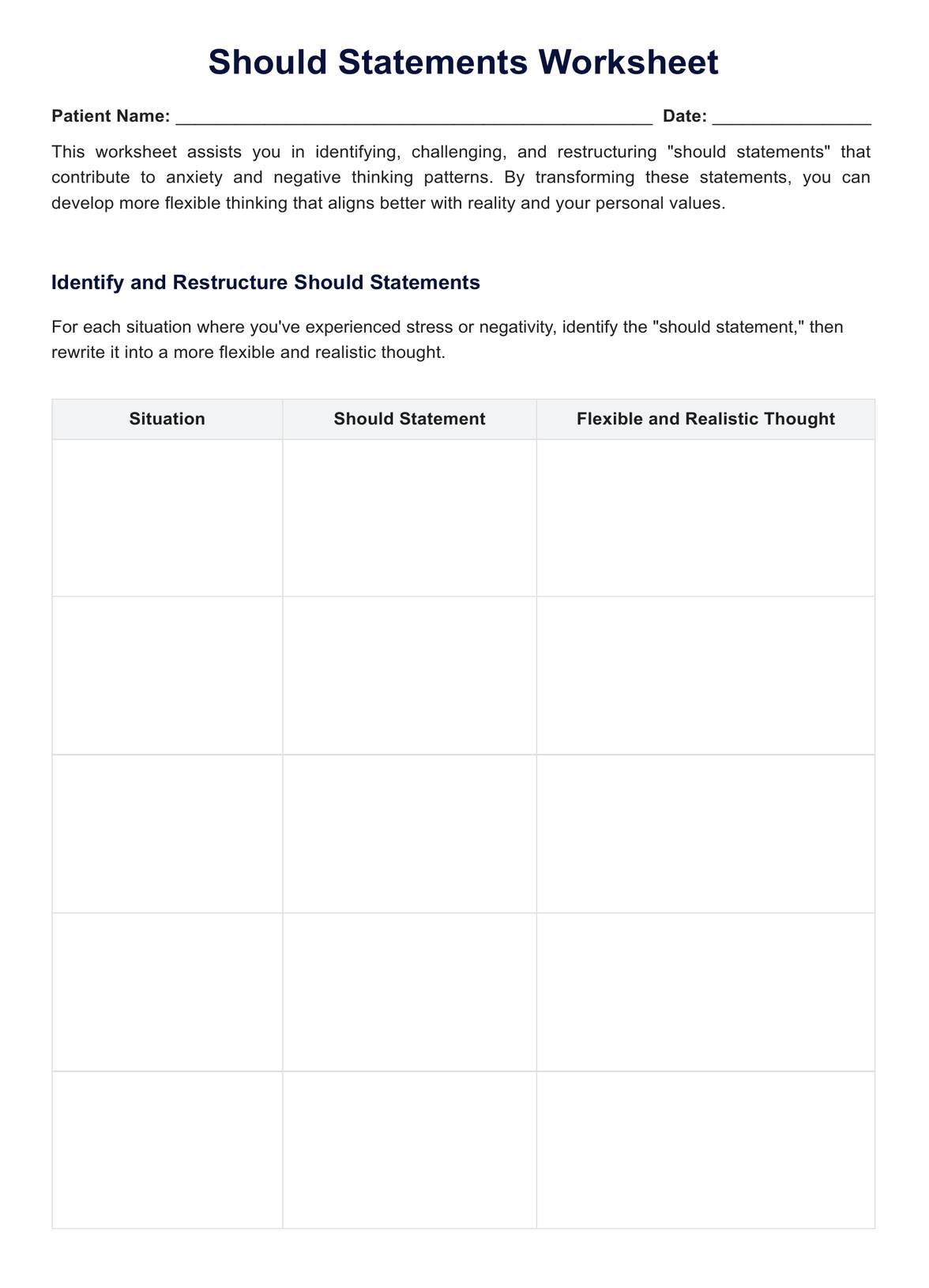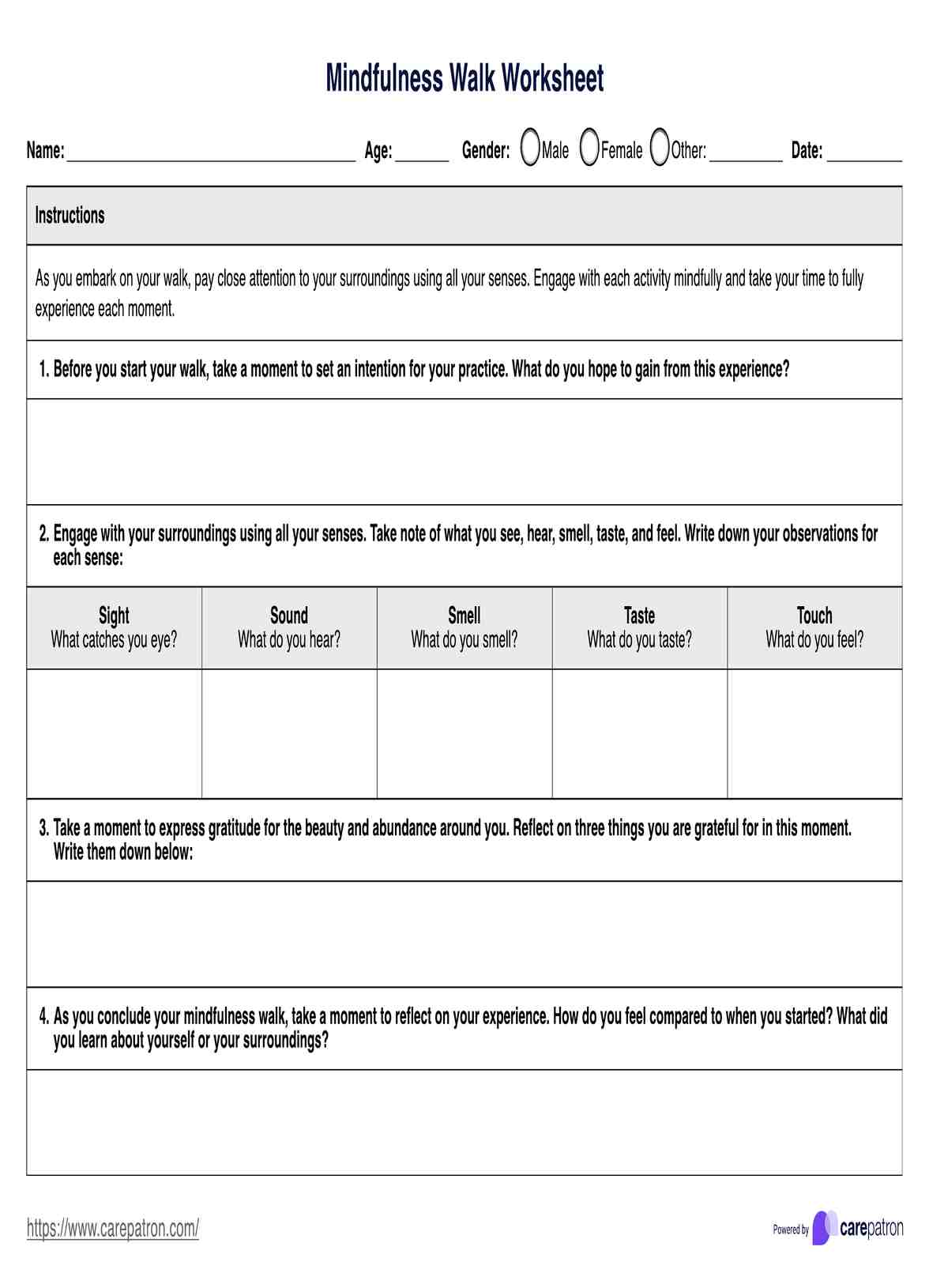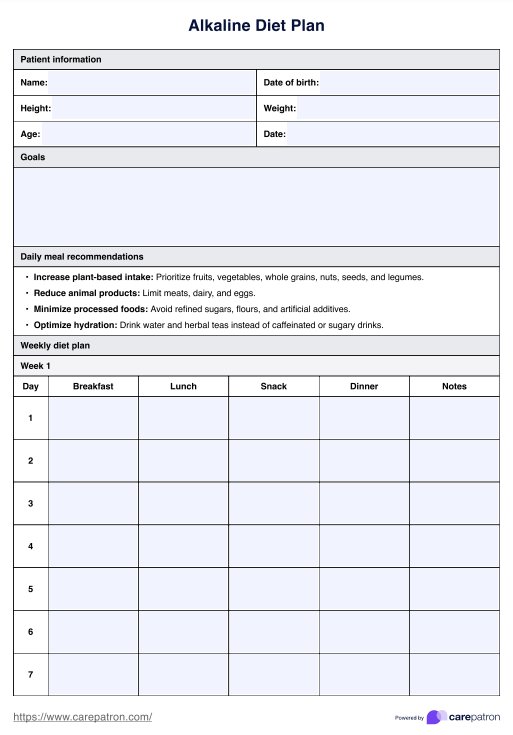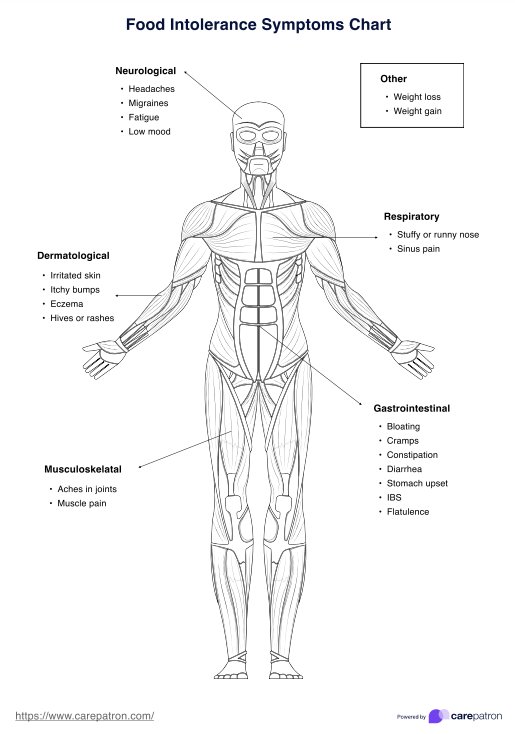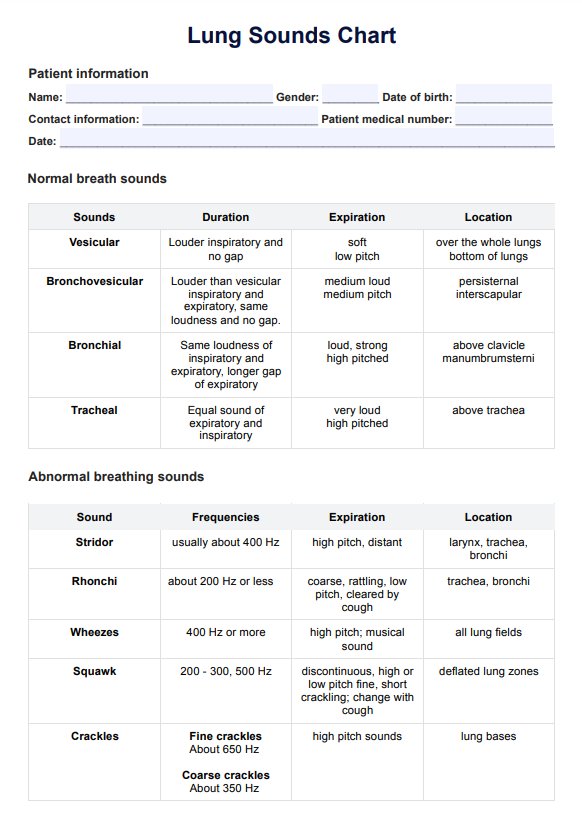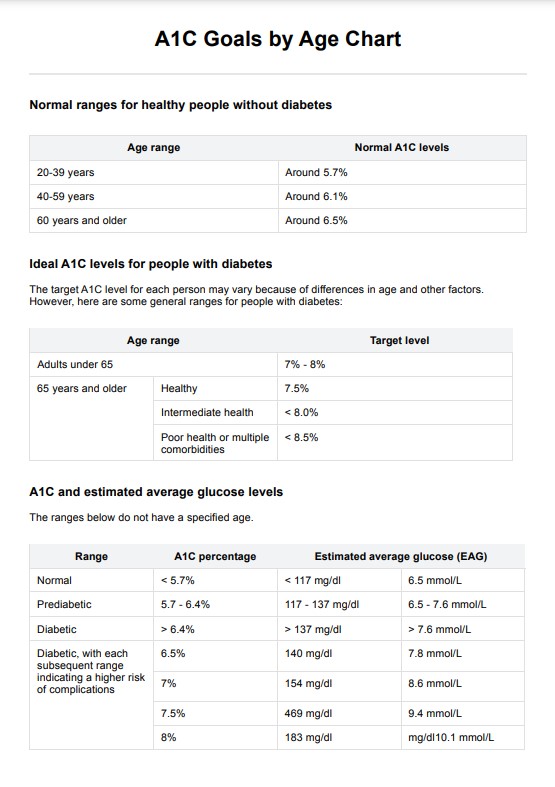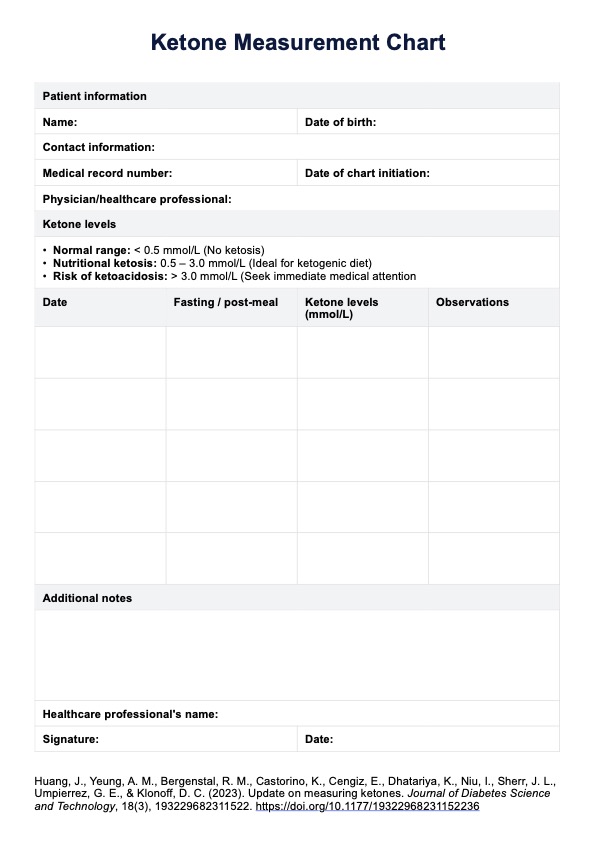Healthy Weight Loss Diet Plan
Create a customized plan for sustainable weight loss success with our Healthy Weight Loss Diet Plan.


What is a Healthy Weight Loss Diet Plan template?
Losing weight will undoubtedly be a significant undertaking for your client, and like any voyage, having a plan for how to reach your destination is hugely important.
Our Healthy Weight Loss Diet Plan centers around building sustainable and balanced eating habits rather than short-term crash dieting. This template can be customized by choosing which measurements or targets to include and emphasizes personal goals towards ensuring gradual and sustainable weight loss.
For some, counting calories can be more of a hindrance than a help, whereas others swear by it. Due to the personal nature of weight loss and the fact that what works for one person may not necessarily work for someone else, we have used a range of measures in this Healthy Weight Loss Diet Plan- any of which can be included or left out in the final diet plan depending on your client’s preferences.
This plan is based on the idea that your client’s weight loss plan will change as they achieve their goals and progress towards their healthy weight. As such, this template can be used repeatedly to record new goals, measurements, or dietary guidelines.
Healthy Weight Loss Diet Plan Template
Healthy Weight Loss Diet Plan Example
How does it work?
Just follow the steps below to fill out this Healthy Weight Loss Diet Plan, and remember, feel free to leave out any sections that don’t suit you or your client.
Client Information
The first section sets out space for your client’s name, date of birth, and the date. Ensuring these details are captured every time will make it easy to track your client’s progress down the line.
Personal goals
The Personal Goals section should include your client’s “why” for wanting to lose weight, along with some specific goals they have. Like any goals, these should be achievable, measurable, and have a specific date.
Goal weight
Perhaps the biggest goal your client will set in this weight loss plan is the goal weight. This weight will allow your client to achieve their personal goals, whether related to physical health, lifestyle improvements, or just being able to shop off the rack at certain stores.
For many, having incremental goal weights can be a useful tool to prevent becoming overwhelmed with too great a target. This also benefits from being achieved sooner than a “final” goal weight, giving a motivational boost. A potential first goal weight could be losing 5-10% of body weight.
Measurements
As well as the scales, there are many ways to measure progress on a weight loss journey. In this section, you or your client can fill out whichever you like. Other measures such as arm circumference or body fat percentage, are provided for clients who do not like weighing themselves as a progress measure.
Calorie target
For those who like to know exactly how many calories they are taking in, we have also provided space to set a daily calorie target to facilitate your client’s weight loss goals.
Macronutrient targets
Calories are not the be-all and end-all of weight loss, and it’s important to ensure your clients are properly nourished throughout their weight loss journey. As such, we have provided space for setting macronutrient targets, with protein, carbohydrates, fats, and fiber already included.
Dietary guidelines
These guidelines could include your client’s dietary preferences, guidelines for when to eat throughout the day, what foods to make an effort to include, and any other suggestions you have for their diet.
Additional notes
Add any additional notes or comments you have in the space provided. These could relate to exercise, water intake, sleep, or other factors impacting your client’s weight loss besides diet.
Review plan
The last step before signing and dating the plan is to add a plan for reviewing your client’s progress. This is crucial for helping to monitor your client’s weight loss, ensure they are losing weight in a healthy and sustainable way, and adjust their diet plan as needed.
When would you use this template?
This Healthy Weight Loss Diet Plan template should be used when it is in your client’s best interests to lose fat for physical health, mental health, or lifestyle reasons. This could be a preventative measure to stop any adverse health outcomes before they arise or to reverse the effects of conditions associated with obesity, such as metabolic syndrome, type 2 diabetes, or cardiovascular disease.
Reasons for wanting to lose weight can be very personal, and due to the stigma people with obesity often face, it can be hard to take action and recognize that a change needs to be made.
Practitioners who can use this Healthy Weight Loss Diet Plan to create personalized weight loss plans for their clients include:
- Dietitians
- Nutritionists
- Weight loss coaches
- Primary Care Physicians
- Personal Trainers
- Bariatric Physicians
- Endocrinologists
Like any major lifestyle change, it’s important to consult with a suitable healthcare practitioner who can monitor progress over weight loss and ensure it is being done safely and sustainably.
Benefits of this Healthy Weight Loss Diet Plan
We know that losing weight can be a personal and emotional journey, fraught with fad diets and products touting false promises. But if your clients are ready to make a positive change in their health and lifestyle, then our Healthy Weight Loss Diet Plan can help. Here are just some of the benefits of this weight loss plan.
Set goals
Setting clear objectives provides direction, motivation, and a framework for assessing progress during your client’s journey to a healthier weight. This template includes space for your client to explore their personal goals and reasons for wanting to lose weight.
Monitor client progress
This template can serve as a great initial plan but can also be used for follow-up appointments and for monitoring progress and making adjustments to the initial diet plan as your client’s needs evolve
Use a variety of measures
We have included a wide variety of measures for monitoring your client’s progress to ensure there is an option for everyone.
Customize nutrition and dietary guidelines
This healthy weight loss diet plan can be customized to your client’s needs and preferences, allowing them greater control and input into their weight loss journey. This can improve adherence and motivation.
Store and edit digitally
Utilizing digital tools allows practitioners to efficiently store and organize client data, allowing prompt reviewing and easy adjustment of dietary plans based on real-time feedback and changes in client circumstances.
Commonly asked questions
A good weight loss plan is tailored to your client’s needs, achievable, sustainable, and includes specific goals and dietary guidelines to help ensure success. We’ve taken the guesswork out of designing a good weight-loss plan with our Health Weight Loss Diet Plan template.
While BMI is a commonly used metric, for many people a BMI is not the full picture. If your weight impacts your daily life, sleep, mental health, or ability to do the activities you love- you may benefit from weight loss. To be sure there are no underlying issues leading to weight gain and to ensure it is safe for you to do so, make sure you see a healthcare practitioner who can help guide you on your weight loss journey.
No! Calorie counting works for some people, but there are many ways to lose weight in a sustainable way without counting calories.


